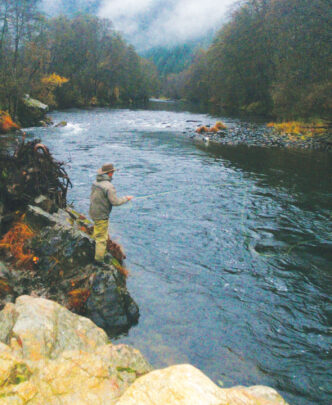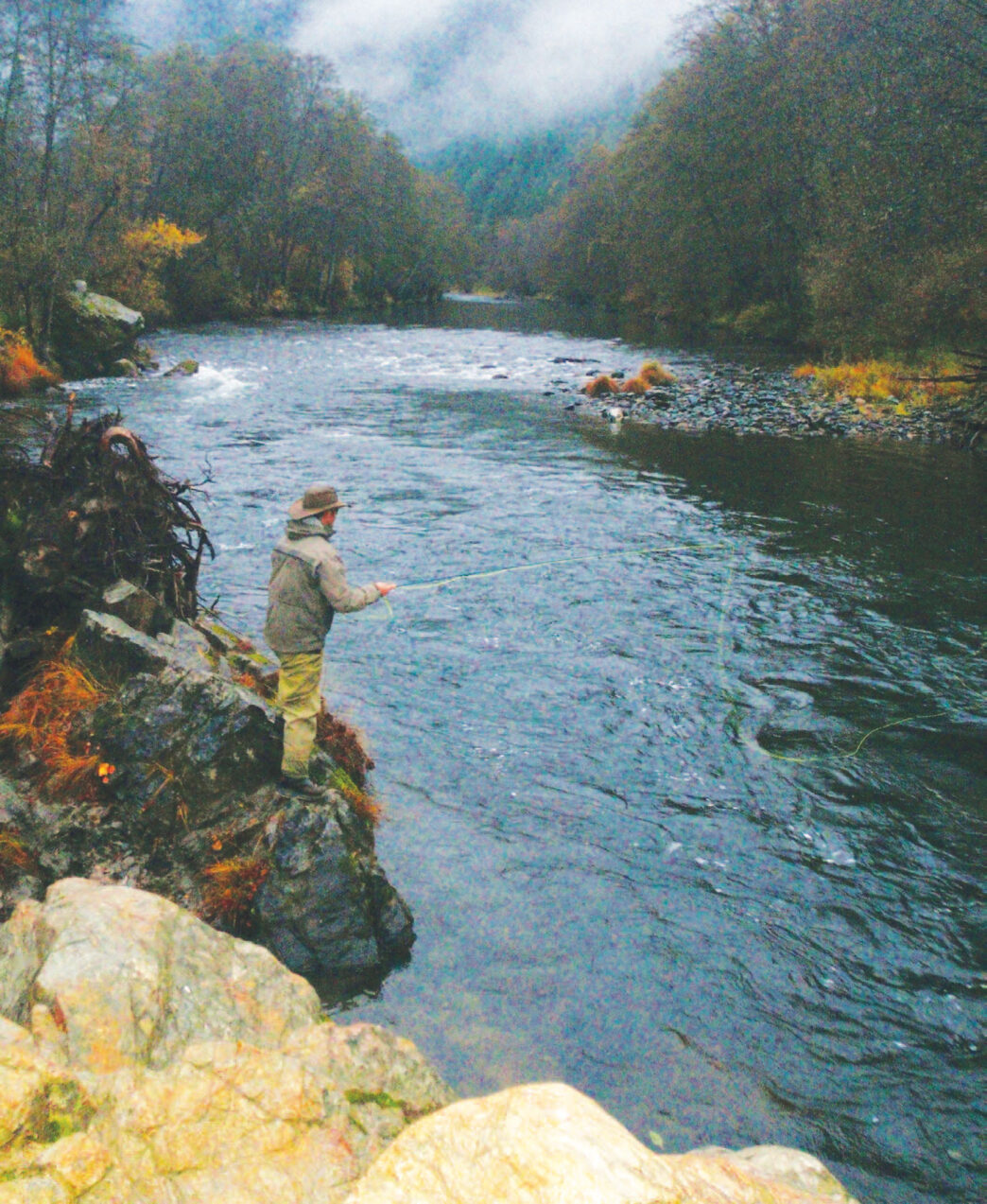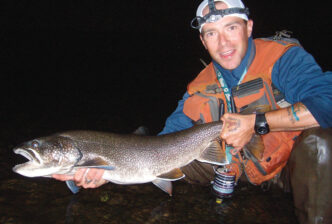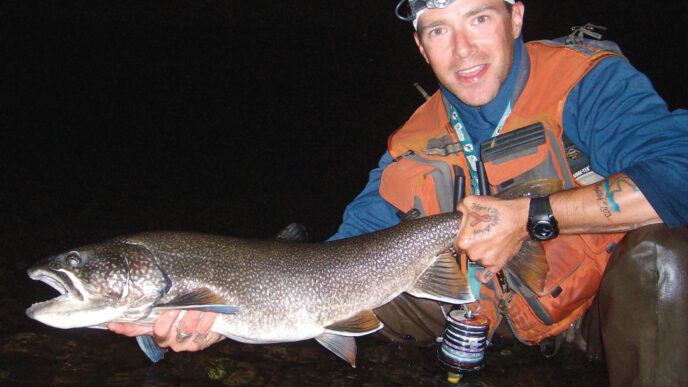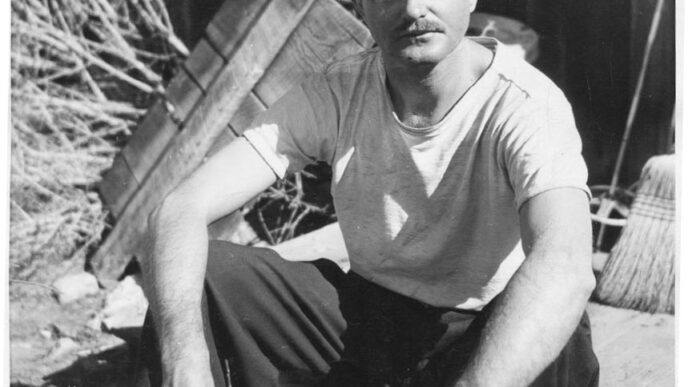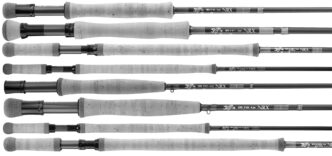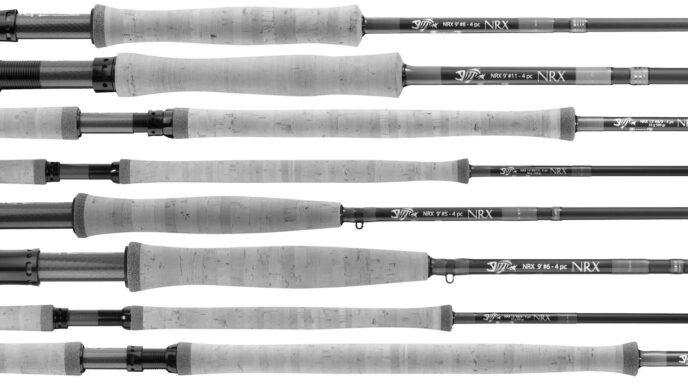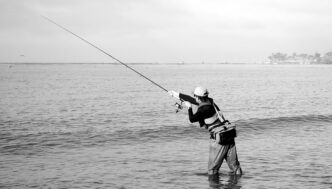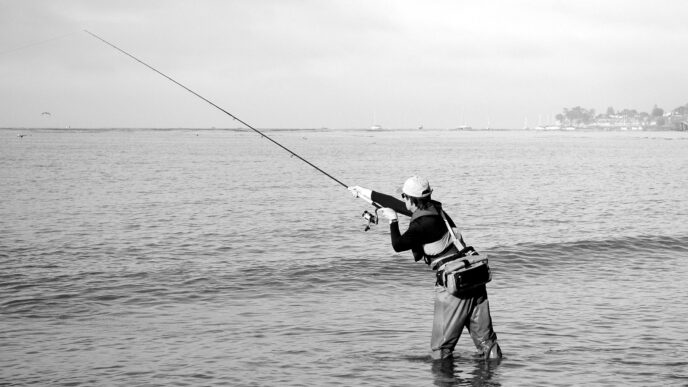You’ve spent the past six weeks looking forward to tomorrow. There has been too much work and not enough play, but that’s about to change. Your fly boxes are organized in parallel rows, packed to the brim, and still reeking of head cement. You’ve cleaned your fly line, patched your waders, and your gear is loaded in the truck. You check the weather forecast before lying down for the night, when suddenly, all hope is shattered by a cheesy televised diagram showing dark gray clouds and big fat water droplets.
Impending weather all too often threatens to get in the way of a successful day on the water, especially for those anglers dedicated to fishing throughout the calendar cycle. Yet the effects of weather on a day’s fishing can easily be turned to an angler’s advantage, and weather should be the cause for canceling a trip only in the most extreme circumstances.
The fact is that weather is a natural part of the world in which fish live, no different from currents, bugs, or moon phases. Part of a fish’s everyday survival relies on reacting to the fluctuations in the constants in its life, whether that means heading for deep water when avian shadows pass overhead or knowing it has leisure to slurp an emerging mayfly, while caddisflies require much swifter reflexes to capture.
When it comes to weather, fish react in different ways. The more the angler understands how fish respond to conditions, the more he or she can use that to advantage and continue to enjoy quality fishing, even when the conditions are less than ideal.
The Three Essentials
Fish are simple creatures, with a brain the size of pea. Of course, that seems incredibly humbling after the umpteenth fly change when casting to a pod of consistently rising trout that just plain won’t eat anything we try to feed them. But it’s true. As finicky as they can be at times, their lives consist primarily of seeking three essentials: food, cover, and comfort.
To survive, a fish must consume more calories than it uses. Therefore, a big part of every day is spent in search of food. This is good news for the angler, because we’re relying on their instinctive need to eat in order to fool them into putting a few chicken feathers wrapped around a sharp hook into their mouth. As it pertains to weather, the fact that fish are constantly searching for food is especially important, because it means that even in the most inclement of weather conditions, there’s a better than good chance that, given the opportunity, a fish will still be willing to eat an artificial fly.
Cover is equally important in a fish’s daily routine. It doesn’t matter how many calories it consumes during the morning hatch if it’s eaten by an osprey that afternoon. Most of a fish’s predators come from above, so the ability for a fish to find overhead cover to protect itself is important. Cover comes in many forms: an overhanging bush, an undercut bank, a big boulder . . . even clouds and overcast skies. Many anglers check the weather forecast before a trip, see clouds or rain in the future, then wimp out and stay home. Anglers in the know smile deep down, because overcast skies provide natural cover for fish, making them feel comfortable and more likely to feed than on bluebird days, when birds of prey can spot them from miles away. And overcast skies trigger Blue-Winged Olive hatches. Ironically, many of the best dryfly days of the year can come on stormy days.
Comfort can be something different for different fish in different bodies of water. Basically, fish, like humans, want to be comfortable. This could mean holding in softer currents instead of raging rapids, or it could mean finding a pocket of water with the perfect temperature, either cold or warm, depending on the species, time of year, and weather and water conditions. What makes a fish comfortable is constantly changing, but should always be a factor in an angler’s thought processes when searching for fish any time of year, in any conditions. Always think to yourself, “If I were a fish today, what would I do?”
Seasonal Weather Effects: Fall
In Northern California, autumn brings some of the most comfortable weather of the year. Nights are cool, but not cold; days are warm, but not hot; and it’s rare to have really tough weather conditions. “Normal” days are sunny and temperate, while potential weather conditions include overcast, rain, or wind.
The first hint of precipitation is always a welcome event in the fall. On streams with anadromous fish, the fresh water triggers a primal nerve in salmon and steelhead, prompting tens of thousands of fish to hasten their migration upriver. While the presence of these fish is obviously important to anglers seeking to catch them, they are also an essential resource for resident trout, who focus on salmon eggs for a high-protein caloric boost before winter sets in.
Furthermore, salmon and steelhead don’t feel comfortable moving through the shallows in conditions of bright light. This is why on sunny, clear days you’re most likely to find them hunkered down on the bottom in the deeper pools, where they feel safe. When the skies are dark with cloud cover, however, these same sea-going fish will frequently be on the move all day long. Experienced steelhead and salmon anglers will almost always tell you that fish are more likely to bite when they’re on the move on overcast days than when hunkered down in bright sunlight.
Salmon primarily spawn in the shallows, and they feel much more comfortable in those shallows when the sky is darker. Often, this means that the primary spawning takes place in the evenings or early morning hours — or even at night — but it can also mean that stormy days present optimal spawning conditions, when the fish will lay eggs all day long. When you’re targeting trout feeding on those eggs, this is yet another reason why wet weather can be great for the fishing.
On most trout streams, the overcast, rainy autumn days also mean one very important thing: Baetis. Blue-Winged Olives, tiny mayflies whose immature nymphs respond to changes in barometric pressure, are notorious for emerging en mass whenever the skies are darkened by a weather front. Combine a major insect hatch like this with the optimal safe feeding conditions, and you are well-positioned for some epic fishing.
Seasonal Weather Effects: Winter
If the occasional drizzly day can bring on memorable Baetis hatches, just imagine what happens when you get several stormy days in a row. Indeed, the best possible weather condition for wintertime angling is cloudy skies. The two main food sources for trout during the winter months (not counting salmon eggs in rivers with anadromous runs of fish) are midges and Baetis mayflies. While midges are almost always present, Baetis respond to weather conditions and emerge most frequently in the rain. The most challenging weather conditions in the wintertime are actually bluebird days. Flows are typically at their low-est (periodic storm runoff notwithstanding), so the fish are especially wary in the shallow water. Predators definitely have the upper hand when the sun is out, and the fish are more likely to hunker down in deeper pools, where they feel safe.
Clear, sunny days also affect water temperatures, creating less than ideal conditions. Thermal layers and overcast skies can actually hold in warmer air, which keeps water temperatures slightly warmer. Clear days may get warmer, but clear nights also get much colder, and the colder nights lead to much colder water temperatures. Fish are cold-blooded creatures, so the lower the thermometer drops, the more lethargic the fish will become, and the tougher the fishing.
Steelhead anglers are no strangers to wet weather, and most steelheaders in the know actually prefer the seemingly unfavorable conditions brought on by winter storms. Winter steelhead respond directly to precipitation, migrating upriver as the waters rise. When steelhead are on the move, they are active and more likely to eat a fly. Conversely, when it is clear and cold, their bodies slow down, they hold in the sanctity of deep pools, and getting them to move to a fly is that much more difficult.
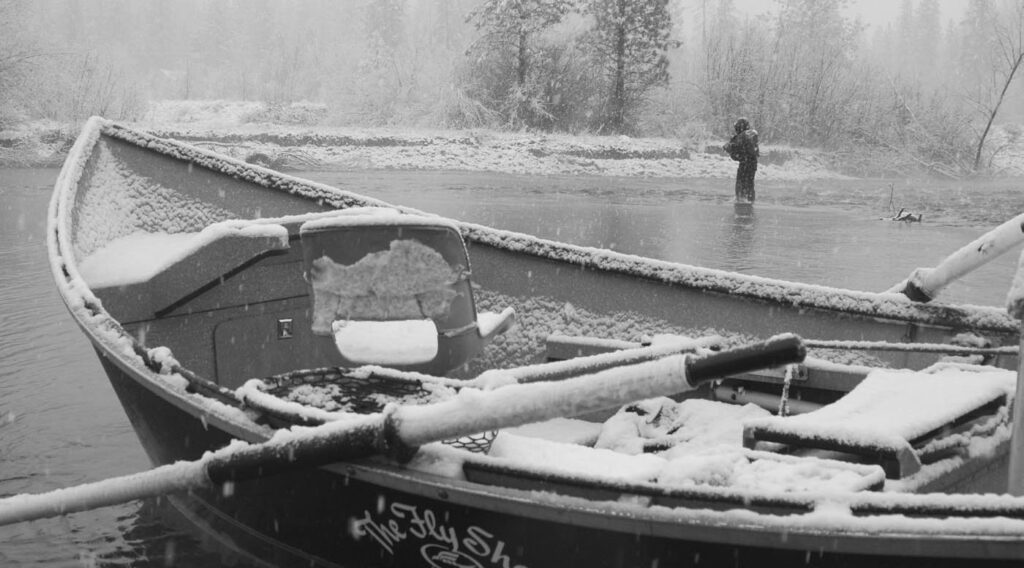
Seasonal Weather Effects: Spring
Spring is a time of transition in the wilderness. Deciduous trees, shrubs, and grasses are awakening from winter dormancy with fresh buds and brilliant foliage; animals of all shapes and sizes are migrating from winter grounds or waking from long slumbers; aquatic beasts — both piscine and their major food sources — are also in transition.
Rainbow trout, in particular, are either preparing to spawn or recovering from the rigors of the act. Either way, they’re hungry and at times willing to throw caution to the wind to gain a few extra calories. This is definitely to the angler’s advantage. It means that the fish want to eat and explains why many of the best fishing days of the year can come when ideal conditions prevail during the spring. (It should be noted that it is best to avoid fishing for trout while they’re spawning, because it can put too much stress on the fish. If you see trout in the spring resting in very shallow water or digging in the gravel, they should be left alone.)
So what conditions are considered ideal? Any groundhog will confirm that spring weather can be cold and nasty, reminiscent of the winter holding its ground. Yet spring can also bring enough sunshine to thaw out your wading boots and bring about some of the best hatches of the en-tire year. And for the angler, both weather types can offer stellar fishing.
The key to the spring weather is consistency. If it’s going to rain, let it rain. If it’s going to be clear, get out the sunscreen. Consistently stormy weather will often bring back winter-type of fishing, with Baetis hatches and happily feeding trout. As a bonus, wintry weather will put a hold on the fair-weather insects, so that when the sun does pop through the clouds, the springtime bugs will frequently hatch in thicker concentrations. Several warm days in a row will signal the start of multiple hatches, including Brachycentrus caddisflies (aka the Mother’s Day Caddis), Skwala stoneflies, March Browns, Pale Morning Duns, even Salmon Flies later in the spring.
Seasonal Weather Effects: Summer
Summer in Northern California brings some of the most consistent weather of the entire year. One can pretty much count on it being clear, sunny, and hot nearly every day. Although the heat can cause discomfort for those of us above the water, most of the rivers, lakes, and streams in the northern part of the state remain cool and comfortable for resident trout. The long, bright days generally mean that the best fishing is either early or late in the day, when the light is low and the fish feel more secure. Most of the insect activity takes place in the afternoon and evening, after the sun has had a chance to warm the larvae and prompt a hatch, so dry-fly purists may as well sleep in and focus their efforts on the evening rise. That said, the bugs remain active in their nymphal form throughout the day, so nymph fishing in the early morning hours is often very productive.
Some rivers, however, such as the lower Sacramento, actually fish best during the middle of the day. The water is bigger and deeper during the summer, due to higher irrigation flows, so predatory threats from above are less of an issue for the trout. The water temperature is controlled by dam releases, so it doesn’t matter how hot the air gets — the water remains comfortable for the fish at 51 to 55 degrees. The main food source for the trout on that river during the summer are Hydropsyche caddisflies, which hatch when the sun warms their pupae in the middle of the day and on into the evening.
As consistent as the dog days of summer can be, the occasional thunderstorm is unavoidable. When that happens, be prepared with — surprise, surprise —BWO imitations, because Baetis mayflies will still hatch, even in the summertime, in overcast conditions. As a bonus, several Northern California rivers (Hat Creek, the upper Sacramento River, the McCloud River) have decent populations of Green Drakes, which also tend to show themselves on rare stormy summer afternoons.
Green Drake mayflies are one of the most overlooked hatches in Northern California, in part because they primarily hatch in stormy conditions in the late spring or early summer. They are one of the larger species of mayflies and present great targets of opportunity for fish — and fly fishers — when they’re available, which is usually on wet, thunderstorm-ridden days when too many anglers are sitting dry and comfortable at home.
Weather doesn’t have to affect your fishing negatively. Learning to analyze and read the weather should be no different from practicing your casting or tying the Improved Clinch Knot a thousand times. Just as you instinctively analyze and read the currents and make adjustments to your presentation, you should also react accordingly to weather conditions by making adjustments to your overall game plan. Just because it’s rainy, or windy, or sunny, or snowing doesn’t mean that fish stop being fish. They still need to eat to survive, and as long as they’re eating, they can be taken on an artificial fly.



